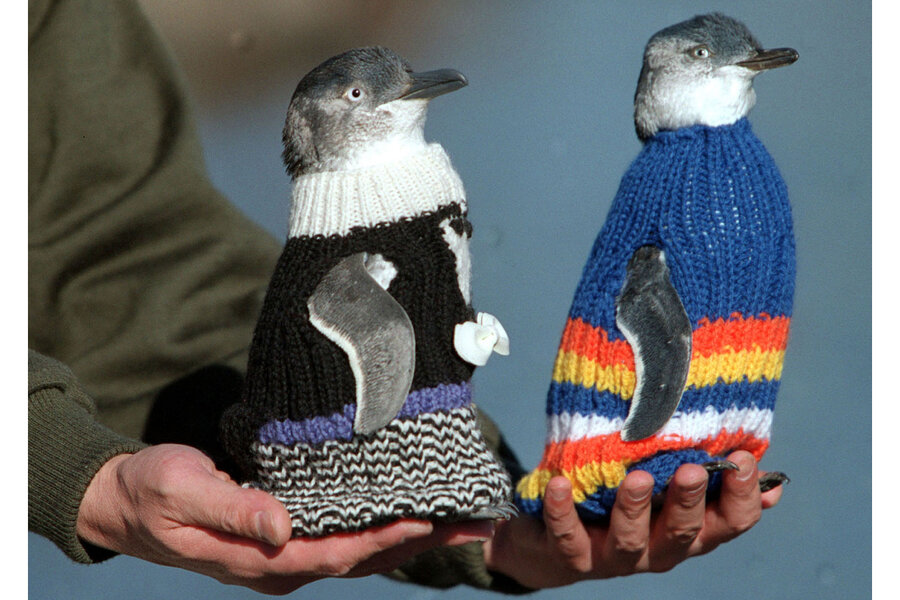How you can help penguins by knitting sweaters for them
Loading...
Protecting Earth's natural wonders can be difficult, complex, and occasionally – adorable. But reminders like World Penguin Day (April 25) can help people connect to the planet's feathered and winged creatures.
Campaigns to knit sweaters for penguins in danger from oil spills represent a creative, individualized approach to helping humans coexist smoothly with the natural world.
Rangers in Australia began using specially knitted sweaters – called "jumpers" across the pond – to protect penguins during a series of oil spills in the late 1990s, according to Penguin Foundation. The "little penguins" or "fairy penguins" at the Phillip Island Nature Parks were trying to clean the oil off their feathers by preening, but the oil made the birds sick.
Animals rescue workers began outfitting the penguins temporarily with sweaters, carefully adjusting the knitting pattern until they found one that slid easily on and off without damaging the feathers. Volunteers the world over began knitting sweaters in various colors and designs, including then-108-year-old Alfred "Alfie" Date, the oldest Australian and a knitter of 80 years.
"The girls who used to work for me, they'll tell you I'm a sucker. I can't say no," Mr. Date told NineMSN. "It's a good way of getting along in life. You make friends all the time but you don't make a fool of yourself either."
The knitted sweaters stopped the penguins from swallowing the oil before they could be properly washed, and it kept them warm when their oil-matted feathers could not. As a result, 96 percent of oil-encrusted penguins returned to the wild in full health. Rescue workers tried to expand the sweater idea to pelicans during the Gulf spill in 2010, The Christian Science Monitor reported.
"Prior to the [sweaters], we used squares of cotton with a hole to stop them from preening," Margaret Healy, a former rehabilitation officer, told the Monitor. "This wasn't very practical as the birds would still manage to preen and take the oil into their system."
The penguins of Australia currently have enough sweaters, but birds in the United States are endangered by an even more common concern – glass window collisions. Anywhere from 600 million to 1 billion birds slam into windows each year with such force that they die within days, says Christine Sheppard of the American Bird Conservancy. More than half the collisions occur on home windows.
Birds in flight see the world like "a kid texting on a skateboard," Dr. Sheppard says, and they do not recognize a glass window as a barrier. Bird collisions are very preventable, however.
Bird lovers can place anything from solar shades to Post-it notes on windows to show birds they should not fly in that direction. An ordinary window screen or net is effective, but children can help by decorating screen-less windows with cheap, washable Tempera paint or colorful holiday stickers.
"You don't need to be restricted to just lines and dots and squares," Sheppard says.
The stickers can be inside the window if they are still visible from outside, but they should cover the window every few inches so small birds do not assume they can fly between the stickers.
America's winged mammals offer another opportunity for creative help, as bats collide more often with wind turbines than windows, and they also suffer from White-Nose Syndrome.
"We've had this really interesting outpouring of concern for bats that I never knew was out there," says Tom French, assistant director of the Massachusetts Division of Fisheries and Wildlife. "People call asking how to set up a bat house in their barn."
Some people choose to buy or build a bat house where bats can establish a nursery and return year after year.
"It's a conservation issue than anybody can do something about, which is really amazing because mostly people just feel depressed about the [decline of] rhinoceros," Sheppard says.








